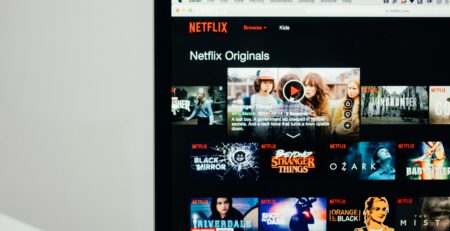The Ultimate Guide to Landing Lucrative Creative Jobs
Welcome to the ultimate guide designed for creatives seeking to transform their passion into a lucrative career. In today’s rapidly evolving job market, the demand for innovative thinkers and skilled creators is higher than ever. Whether you’re a graphic designer, a writer, a digital marketer, or an artist, understanding how to position yourself in the creative industry can significantly enhance your career prospects.
This guide will explore various strategies to help you identify and secure creative jobs that not only pay well but also align with your artistic vision and career goals. We’ll delve into the importance of building a compelling portfolio, the art of networking in creative circles, and how to leverage social media to your advantage.
Moreover, we’ll discuss the significance of continuous learning and adaptation in maintaining relevance in a field that’s constantly changing. With technology advancing, new tools and platforms are shaping the creative job landscape, thus, staying updated with these changes is crucial.
Understanding the market needs and how to effectively meet them can set you apart from the competition. We’ll provide insights into the creative industry’s hiring trends and what employers are looking for in potential candidates. This includes not only technical skills but also soft skills that can often be the deciding factor in landing a job.
Additionally, we’ll cover practical steps to prepare for job interviews in the creative field, which can be quite different from traditional roles. From presenting your portfolio effectively to expressing your creative process clearly, every detail counts.
Financial negotiation is another critical aspect we’ll tackle. Many creatives struggle with pricing their work appropriately. We’ll offer tips on how to negotiate salaries and project fees, ensuring that you are compensated fairly for your creativity and hard work.
For freelancers and entrepreneurs, we’ll discuss strategies to attract and retain clients, manage projects efficiently, and maintain a steady income flow. Building a personal brand and marketing yourself effectively can make a significant difference in how potential clients perceive you.
Lastly, we’ll touch upon the psychological aspects of creative work, including dealing with rejection, maintaining motivation, and managing work-life balance. The creative industry can be as demanding as it is rewarding, making mental resilience a key component of success.
By the end of this guide, you’ll be equipped with the knowledge and tools necessary to advance your career in the creative industry. Whether you’re just starting out or looking to take your creative career to the next level, this guide is your roadmap to success.
Let’s dive into the details and start shaping your path to a thriving creative career!
Most Asked Questions About Landing Lucrative Creative Jobs
- What are the key elements of a standout portfolio for creative jobs?
- How can I use social media to enhance my visibility and attract job offers?
- What are the most effective networking strategies for creatives?
- How do I prepare for a creative job interview?
- What salary negotiation tips should creatives be aware of?
- How can freelancers attract and retain clients effectively?
- What are the best practices for managing work-life balance as a creative professional?
What are the key elements of a standout portfolio for creative jobs?
Creating a standout portfolio is crucial for any creative professional. It’s not just about showcasing your best work; it’s about telling a compelling story of your creative journey. Here are key elements to consider:
- Variety: Include a range of projects that showcase different skills and styles. This demonstrates your versatility.
- Quality over Quantity: Choose quality over quantity. A few excellent pieces are better than many mediocre ones.
- Personal Projects: Include personal projects that show your passion and initiative. They can often speak louder than client work.
- Process Explanation: Detail your creative process for each project. This helps potential employers understand how you approach problems.
- Outcomes: Highlight the outcomes and successes of your projects. If possible, include statistics or testimonials.
- Clean Layout: Ensure your portfolio is well-organized and easy to navigate. A clean, professional design is key.
- Accessibility: Make your portfolio accessible. Consider an online portfolio that is easy to share and view.
- Updated Content: Regularly update your portfolio to remove older works and add new ones. This shows that you are active and evolving.
- Contact Information: Clearly display your contact information and professional social media links.
- Personal Branding: Your portfolio should reflect your unique brand. Use consistent fonts, colors, and logos.
For more insights on creating a compelling portfolio, check out Behance where many creatives showcase their work.
How can I use social media to enhance my visibility and attract job offers?
Social media is a powerful tool for creatives to showcase their work, connect with peers, and attract potential employers. Here’s how you can use it effectively:
- Choose the Right Platforms: Focus on platforms that are popular with creatives, such as Instagram for visual artists or LinkedIn for professional networking.
- Consistent Posting: Regularly post new work, updates, and behind-the-scenes content to keep your audience engaged.
- Engage with Your Audience: Respond to comments, participate in discussions, and engage with other users’ content to build a community around your work.
- Use Hashtags Wisely: Use relevant hashtags to increase the visibility of your posts to potential employers.
- Showcase Your Personality: Let your personality shine through your posts. This can make you more relatable and memorable.
- Highlight Professional Achievements: Share your successes, exhibitions, publications, or collaborations to establish credibility.
- Link to Your Portfolio: Always include a link to your online portfolio or website to direct potential employers to your professional work.
- Follow Industry Leaders: Follow and interact with industry leaders, companies, and influencers who can provide inspiration and potential job leads.
- Share Testimonials: If you have received positive feedback from clients or colleagues, share these testimonials to build trust.
- Advertise Your Services: If applicable, use social media advertising to reach a broader audience.
For more detailed strategies on using social media for professional growth, consider reading Why Your Company Should Outsource Social Media.

What are the most effective networking strategies for creatives?
Networking is essential for any professional, but it’s especially crucial in the creative industries where opportunities often arise through personal connections. Here are some effective networking strategies:
- Attend Industry Events: Regularly attend industry conferences, workshops, and gallery openings. These are great places to meet peers and industry leaders.
- Join Professional Associations: Become a member of professional associations related to your field. These often offer networking events, resources, and job listings.
- Utilize Online Forums: Participate in online forums and groups related to your creative field. Sites like Reddit and LinkedIn groups can be valuable.
- Volunteer: Offer your skills to non-profits or industry events. This can increase your visibility and expand your network.
- Start a Blog or Podcast: Share your expertise through a blog or podcast. This can attract a following and open up networking opportunities.
- Request Informational Interviews: Reach out to professionals you admire for informational interviews. This can provide insights and establish valuable connections.
- Collaborate on Projects: Collaborate with other creatives on projects. This can lead to new connections and opportunities.
- Keep in Touch: Maintain relationships with your network through regular updates and check-ins. Don’t just reach out when you need something.
- Offer Help: Be willing to help others in your network. This builds goodwill and increases the likelihood of reciprocal help.
- Use Business Cards: Have a creative business card ready to hand out whenever you meet someone new.
For more on networking, consider exploring Creative Boom, a platform full of resources and inspiration for creatives.
How do I prepare for a creative job interview?
Preparing for a creative job interview can be quite different from other fields. It’s not just about answering questions effectively; it’s also about presenting your creative work and thought process. Here are some tips:
- Research the Company: Understand the company’s products, services, and culture. Tailor your presentation to align with their values and needs.
- Prepare Your Portfolio: Select work that is relevant to the job. Be ready to discuss your creative process, challenges, and successes.
- Practice Your Pitch: Be able to succinctly describe who you are, what you do, and what you can bring to the company.
- Expect Hands-On Tasks: Be prepared to participate in a hands-on task or workshop. This is common in creative interviews to assess your skills in real-time.
- Ask Insightful Questions: Prepare thoughtful questions that show your interest in the role and your strategic thinking skills.
- Dress Appropriately: Understand the company’s culture and dress accordingly. Creative industries often have more relaxed dress codes, but it’s important to look professional.
- Bring Necessary Tools: If you’re a designer, bring a laptop or tablet to present your portfolio. If you’re an artist, bring your sketchbook.
- Show Your Personality: Creatives are often hired not just for their skills but also for their ability to fit into the team. Let your personality shine.
- Follow Up: Send a thank-you email after the interview. Consider including a brief note about how you can help solve a problem discussed during the interview.
- Handle Criticism Gracefully: You might receive feedback on your portfolio during the interview. Show that you can accept constructive criticism and learn from it.
For more tips on preparing for interviews, check out Guide to Video Interviews.
What salary negotiation tips should creatives be aware of?
Negotiating salary can be daunting, especially for creatives who may not be accustomed to discussing money. However, being prepared can help you secure a salary that reflects your worth. Here are some tips:
- Know Your Worth: Research salary ranges for your role in your geographic area. Websites like Glassdoor can provide useful insights.
- Consider the Entire Package: Look beyond the salary. Benefits, work flexibility, and opportunities for professional development can also be valuable.
- Be Ready to Articulate Your Value: Prepare to discuss specific examples of how your work has benefited previous employers or clients.
- Practice Negotiation: Role-play negotiation scenarios with a friend or mentor. This can help you feel more confident during the actual conversation.
- Be Professional: Keep the tone positive and professional. Express enthusiasm for the role while stating your needs.
- Don’t Rush: If presented with an offer, it’s okay to take time to think it over. This shows that you are considering the offer seriously.
- Prepare for Pushback: Be ready to respond if your initial request is not met. Decide in advance what conditions you are willing to accept.
- Consider Counteroffers: If you have a current job, be prepared to handle a counteroffer from your current employer when you announce your intention to leave.
- Know When to Walk Away: If the offer does not meet your minimum requirements and negotiations stall, be prepared to walk away.
- Get Everything in Writing: Once an agreement is reached, ensure all details are included in your employment contract.
For more detailed guidance on salary negotiations, visit How to Know if Your Salary is Competitive.
How can freelancers attract and retain clients effectively?
Freelancing offers great flexibility and the opportunity to work on a variety of projects, but it also requires you to continually attract and retain clients. Here are some strategies:
- Build a Strong Online Presence: Maintain an up-to-date, professional website and active social media profiles where potential clients can find and contact you.
- Offer Exceptional Service: Deliver quality work on time, respond promptly to communications, and go above and beyond to meet client needs.
- Ask for Referrals: Encourage satisfied clients to refer you to others. Word-of-mouth can be a powerful tool for freelancers.
- Network Continuously: Attend industry events, participate in online forums, and connect with other freelancers who might refer overflow work to you.
- Provide a Memorable Experience: Make the process smooth and enjoyable for your clients. A good client experience can lead to repeat business.
- Stay Relevant: Keep your skills and industry knowledge up to date. Consider taking courses or attending workshops.
- Use Client Management Tools: Use tools like CRM software to keep track of your interactions with clients and manage projects efficiently.
- Offer Flexible Pricing: Be open to negotiating your rates or offering package deals to better suit client needs and budgets.
- Follow Up: After completing a project, follow up to ask for feedback and discuss future needs. This keeps the relationship alive.
- Be Transparent: Be clear about what you can deliver and by when. If issues arise, communicate them early.
For more insights on managing freelance work, see How to Market Yourself as a Freelancer at icreatives staffing.
What are the best practices for managing work-life balance as a creative professional?
Maintaining a healthy work-life balance is crucial for creative professionals, who often juggle multiple projects and deadlines. Here are some best practices:
- Set Clear Boundaries: Define clear work hours and stick to them. Inform clients of your availability to manage expectations.
- Prioritize Tasks: Use tools like to-do lists or digital planners to prioritize tasks and manage your time effectively.
- Take Regular Breaks: Short breaks can help prevent burnout and boost creativity. Try the Pomodoro Technique to structure your workday.
- Learn to Say No: Be selective about the projects you take on. Overcommitting can lead to stress and burnout.
- Delegate When Possible: Outsource tasks that are outside your expertise or too time-consuming. This can free up time for creative work.
- Maintain a Dedicated Workspace: Having a specific area for work can help you mentally separate work from personal life.
- Stay Physically Active: Regular exercise can reduce stress and increase mental clarity.
- Seek Support: Don’t hesitate to seek professional help if you feel overwhelmed. Therapists or coaches can provide valuable support.
- Invest in Hobbies: Engage in hobbies outside of your creative work. This can provide a refreshing mental break.
- Plan Downtime: Schedule time for relaxation and vacations. Downtime is essential for creative rejuvenation.
For more on managing work-life balance, read How to Use Work-Life Balance.
Conclusion
Landing a lucrative creative job requires more than just talent. It involves strategic positioning, effective networking, and continuous skill development. By following the insights and strategies outlined in this guide, you can enhance your visibility in the creative market, negotiate better job terms, and achieve a fulfilling career.
Remember, the creative industry is dynamic and ever-evolving, so staying adaptable, proactive, and resilient are key traits that will help you navigate through challenges and seize opportunities. Keep refining your portfolio, expanding your network, and embracing new technologies and platforms that can showcase your work to a broader audience.
Moreover, always prioritize your mental and physical well-being. The pressures of creative work can be intense, but maintaining a healthy work-life balance is crucial for sustained creativity and productivity. Use the strategies discussed to manage your time and resources effectively, ensuring that you can enjoy both your professional achievements and your personal life.
Finally, never stop learning and pushing the boundaries of your creativity. Whether through formal education, online courses, or self-directed learning, continuous improvement can lead to mastery and open up even more doors in your career. Embrace feedback, learn from failures, and celebrate every success on your creative journey.
With dedication, passion, and the right approach, you can transform your creative skills into a rewarding and lucrative career. So go ahead, unleash your creativity, and make your mark in the creative world!For further reading on enhancing your productivity and creativity, consider exploring The Ultimate Guide to Boost Your Productivity with AI Tools at Work.












